When it comes to making a decision on the type of home you’d like to live in, there are several concerns most people have. The cost of the home is a major factor, but, beyond cost, the quality of what you get for your money is also a major concern. Manufactured homes generally cost less than a site-built home, but are they built as well? Also, see our blogpost on “Are Manufactured Homes Of A Lower Quality Than Traditional Site-Built Homes?”.
Table of Contents
Short Answer
The biggest difference between a manufactured home and a site-built home is that the manufactured home is built in a factory while the stick-built home is built onsite in the neighborhood. The materials used to build either tend to be the same, but the methods used to build them differ significantly. Let’s take a more in-depth look!
What is A Site-Built Home?
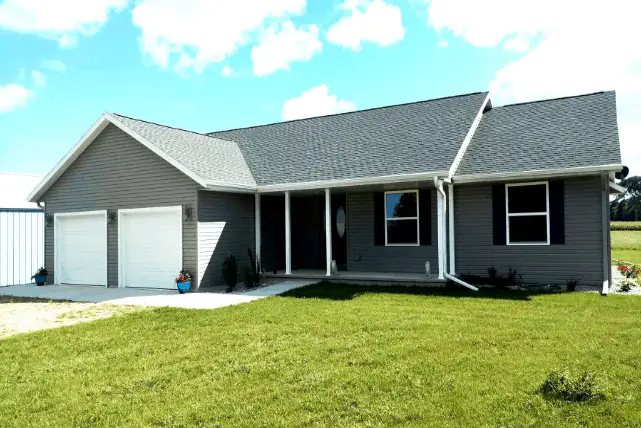
- Built Onsite – A site-built home is just that, it is built on-site in the neighborhood, right on the lot.
- Wood Framing – Most site-built homes are built with wood framing; 2 x 4s for the exterior and interior walls with 2 x 4 truss work for the roof.
- Local Building Codes – Site-built homes must conform to all of the local building codes including state, county, city and local codes.
- Inspections – Site-built homes are inspected by local authorities at various points throughout the construction to make sure they conform to the local building codes.
- Stick-Built – These homes are also referred to as “stick-built” homes because of their wood framing construction design. There are other building methods, but wood framing is bar far the most popular for newly built homes today.
- Value Over Time – A site-built home that is well cared for over the years generally will appreciate in value over the time. With real estate, we’ve all heard “location, location, location”. How much a home will go up in value over time has much to do with where it is located.
What Is A Manufactured Home?
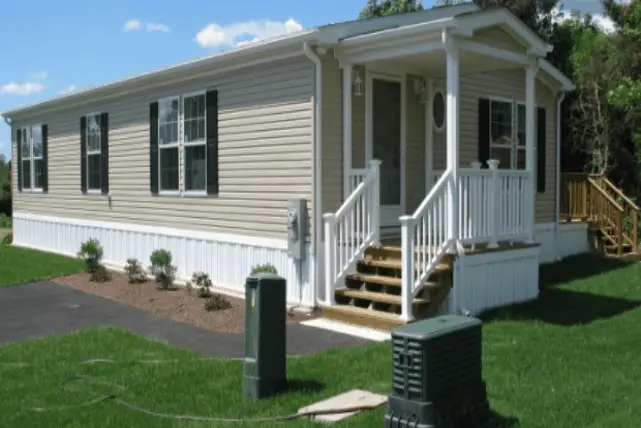
- Manufactured homes – Are often referred to as mobile homes, or even a trailer. However, there is a big difference in quality and style of manufactured homes today and those of the distant past.
- Factory Built – Manufactured homes are not built onsite. Instead, they are built in a controlled factory and then transported to the homesite and setup after completion.
- HUD Standards – All manufactured homes built after June 15, 1976 must conform to a uniform building code rather than to state and local building codes where they will reside. These HUD standards are stringent and were put into place to ensure that all manufactured homes across the nation are built to a common quality standard and built to withstand the elements. For more information check out “HUD Laws And Mobile Homes”.
- Steel Chassis – Manufactured homes must be moved to the homesite from the factory. They are built atop a non-removable robust steel chassis that allows them to be transported to a distant location over roadways.
- Sections – Manufactured homes are built in sections. They may be a single wide home (one section) are can be three or four sections. After manufacturing at the factory, each section is transported to the final site on their own wheels.
- Sections Joined Together – Once transported to the site from the factory, the different sections are moved into place and joined together.
- Foundations – The different sections are not generally placed on a permanent foundation. They are usually on a pier type of foundation and attached to the ground with tie-downs. This can make them more difficult to re-finance.
- Inspections – Since the actual construction of the homes are at a factory, all construction inspections are performed at the factory. There are local inspections performed for the utilities hook-ups as well as the foundation and tie-down systems, skirting etc.
- Cost – Manufactured homes are generally less expensive than site-built homes or modular homes.
- Value Over Time – While mobile homes have a reputation for decreasing in value, this is dependent on many factors. Check out our post on “Do Mobile Homes Have Good Resale Value?”.
Common Construction Methods – Foundations
SITE-BUILT HOMES
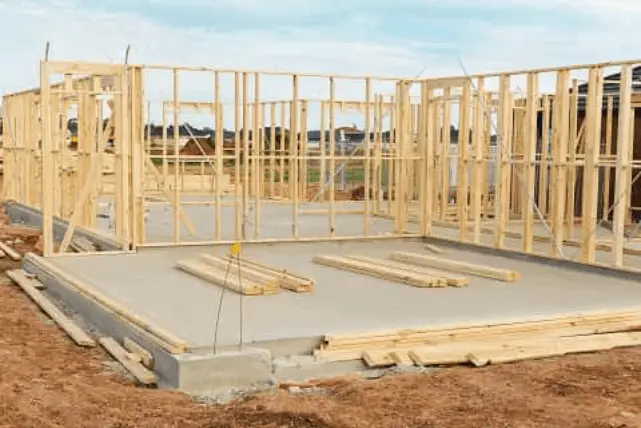
- Footing and Stem Wall Construction – Typically footings are about 12 inches wide and about 18 inches deep. This will depend on the soil of the site. Also, the height of the stem walls will depend on the slope of the homesite. A slab can be poured over the top of the foundation or a crawl space constructed.
- Drilled Shaft Concrete Piers and Grade Beam – This type of foundation is mostly used for commercial and large industrial buildings. If the residential dwelling is large enough this might be considered for use but is not common.
- Slab On Grade With Turned Down Edge – This is most often used in areas with little or no frost. This type of foundation is done in a monolithic pour (all at the same time). A post tension cable system works well with this type of foundation.
- Permanent Wood Foundations – These types of foundations are rare, but when found are mostly in the northern climes. Basements are framed with pressure treated wood and sit atop a poured concrete slab. Crawl spaces are usually built onto a stem wall made of pressure treated wood.
- Basement Foundation – Basements are generally constructed of cinder block walls or cast-in-place concrete walls. With either type, they must be
water proofed to prevent water infiltration problems.
MANUFACTURED HOMES
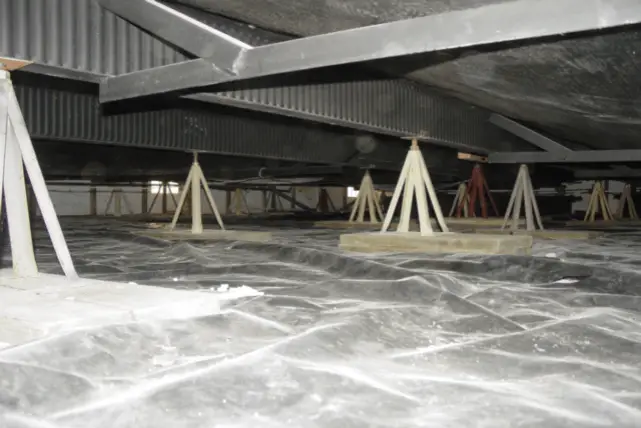
- Steel Frame – Manufactured homes are built atop steel beams at the factory. These are girder beams with attached wheels and axles for transportation to the final home site.
- Permanent Foundations – A permanent foundation is the way to go if you own the land and do not plan on ever moving the home. With a permanent foundation the home can be considered “real estate”. The benefit is that financing is far easier to acquire. These types of foundation vary from region to region as far as materials. They are significantly more costly than non-permanent foundations. There are generally two types:
- Basement Foundations – These would be the most expensive types of foundations placed under a mobile home. There are advantages in that the home will be considered real estate, and additional square footage is added to the dwelling. A basement foundation is built the same as it would be for a site-built home. It is subject to all of the local building codes and material requirements.
- Pit Foundations – This is very similar to a basement foundation in that the earth is removed from beneath the home. However, the space is far more shallow. Care must be taken that the stem walls built are in the exact location to support the manufactured home using concrete piers in the proper places. Manufactured homes with this type of foundation is generally considered “real estate” which makes financing easier and more available. These foundations also keep the home lower to the ground which give the home the appearance of a traditional stick-built structure.
- Non-Permanent Foundations – This type of foundation makes the home more easily moved if desired. These are the foundations often used in a mobile home park. In many cases, the axels remain attached to the home.
- Slab Foundation – A single slab of concrete is poured on the ground. It doesn’t need to be as precise to the size as permanent foundations. The home will sit atop piers that rest on the concrete slab. Skirting is then used between the bottom of the home to the ground. This type of foundation is not protected against the freezing and thawing of the ground. The foundation may not be able to qualify the home as “real estate” depending upon the area local codes.
- Runner Foundation – With this type of foundation, narrow strips of concrete are laid underneath the support areas of the home. There may be runners going in both directions under the home to make sure all of the contact areas for the home have support underneath them. Piers are then used. These sit atop the concrete runners and support the home. Tie-downs are then used to attach the home to the ground. This type of foundation can be less expensive than any other type. Whether or not the home can qualify as “real estate” with this type of foundation is dependent upon the local building codes.
- Pier Foundations – This is a very common foundation type that has been used for ages. The ground is leveled and compacted on the home-site. The piers may be steel or concrete generally in a pyramid shape. The piers are strategically placed on the ground under the I-beams and locations of support for the home. Shims are used to level the home. Tie-downs are then used to keep the home anchored to the ground. This type of foundation is generally the least expensive type of foundation for a manufactured home and often will not qualify for “real estate” status.
Common Construction Methods – Framing
SITE-BUILT HOMES
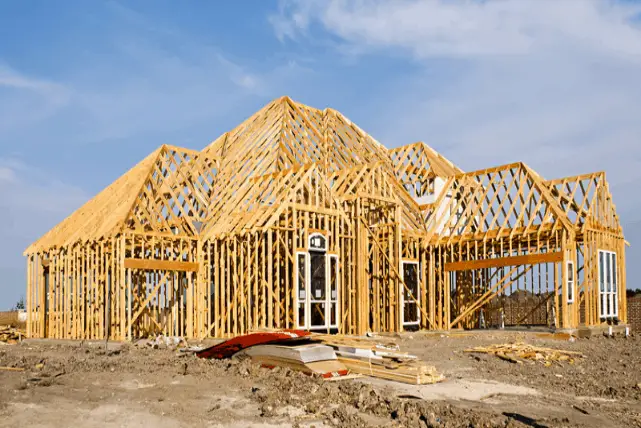
Platform or Stick Framing – This is the method most commonly used in today’s homes. This type of framing method uses studs, generally 2×4 or 2×6 that are the vertical members that form the outer walls. The studs are generally placed 16 inches on center and in most regions have plywood sheathing on the outside to add shear strength to the outer walls.
Interior Walls – These generally use 2×4 studs that are placed either 16” on center or 24” on center; depending upon whether or not the interior wall is a load-bearing wall.
Trusses – Are generally used for framing the roof structure of most houses. Trusses are pre-fabricated, triangulated wooden structures used to support the roof. They are generally pre-built offsite from 2×4 wooden members. Trusses are strong, lightweight and are able to span long distances. They transfer the weight of the roof to the two outer walls which means that in most cases, interior walls can all be non-load bearing walls.
MOBILE (MANUFACTURED) HOMES
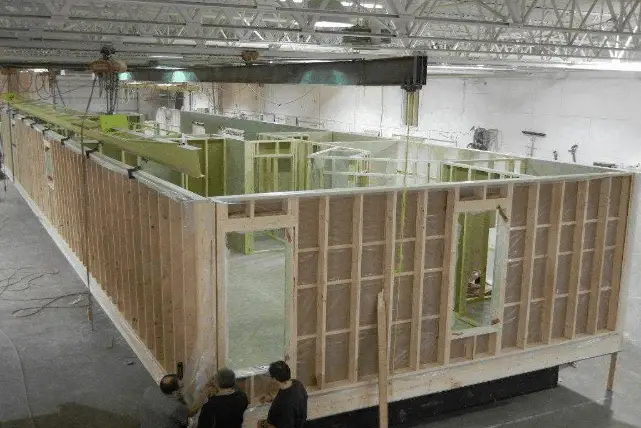
In almost all cases, the framing methods for outer walls, interior walls and roofing systems are identical to the methods described above for site-built homes. Since June 15, 1976 when the HUD constructions standards became mandatory, there is little, if any, difference between the construction framing methods between manufactured homes and traditional site-built homes.
Common Construction Methods – Plumbing
SITE-BUILT HOMES
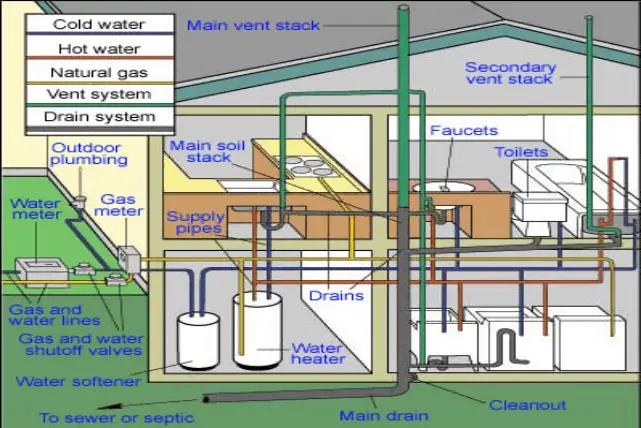
- Galvanized Steel Pipe
- This type of pipe is made of heavy steel coated with zinc. The zinc coating helps keep the steel pipe from rusting. Although this type of piping is no longer used in construction, if your home was built from the 1930s through the 1980s, there is a good chance that it has galvanized pipe.
- Galvanized steel piping is heavy and difficult to work with.
- This piping as a limited
life span . Over time, the zinc coating will wear off the pipe and the pipes will begin corroding and rusting from the inside.
- Copper Pipe
- Copper pipes started to appear in homes around the 1930s. Though they are most commonly found in homes built from the 1960s to present. The copper pipes used are
thin walled. These pipes do not corrode and degrade the way galvanized steel pipes do. - Over the years copper has become very expensive and are often cost prohibitive.
- Because copper pipes are lightweight and
thin walled , there are occasions where a pinhole might develop in the pipe causing a leak.
- Copper pipes started to appear in homes around the 1930s. Though they are most commonly found in homes built from the 1960s to present. The copper pipes used are
- PVC Pipe
- Polyvinyl Chloride (PVC)
are found in homes built from the 1950s to present. These pipes are long lasting and do not corrode. However, they are not suitable as a water supply line. As such, the use of PVC tends to be for drain lines for sinks and plumbing fixtures throughout the home.
- Polyvinyl Chloride (PVC)
- Pex Pipe
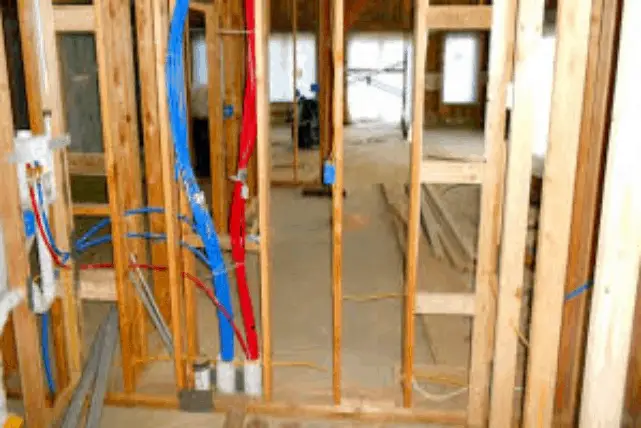
- Cross-linked Polyethylene, commonly known as PEX piping is the most common type of piping used in residential construction today. It has many advantages in that it does not corrode, rust or degrade over time. It is flexible and easy to work with. PEX piping has become the mainstay in construction since the 1990s forward.
- PEX Piping is usually red in color for hot water supply lines and blue for cold water.
- The only disadvantages for PEX piping
is that it must be kept out of direct sunlight. Also, some of the fittings can be expensive. - Unlike PVC pipes, PEX is never used for drain lines.
MOBILE (MANUFACTURED) HOMES
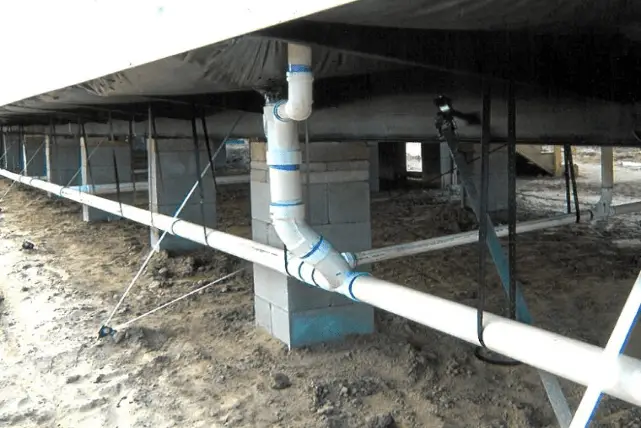
Just as with the discussion of framing earlier, the plumbing used in manufactured home construction generally mirrors that of traditional home plumbing. The major difference is that the piping system in a mobile home tends to be in the location of the pipes and a simplification of the design.
Manufactured homes are built differently, which is the reason for the location differences. Also, older mobile homes tended not to have drain clean-outs and cut-off vales. Generally, newer manufactured housing is incorporating these designs into the plumbing.
In a site-built home, the water supply lines are built inside of the walls. In a manufactured home, they run underneath the home and rise through the floor in the location of the plumbing fixture. This makes repairs to mobile home plumbing systems far less expensive and easier than for a site-built home.
Common Construction Methods – Electrical
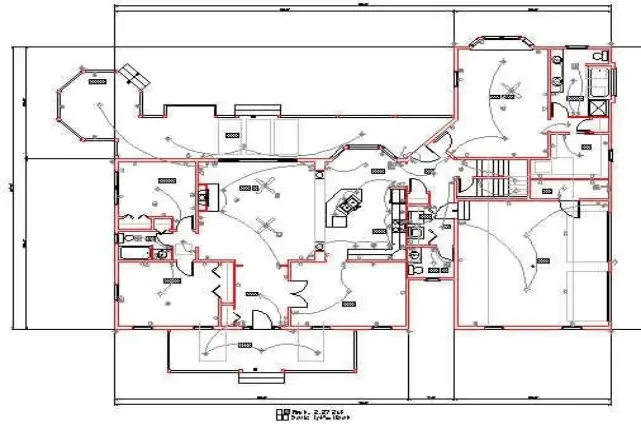
There is little, if any, real difference in the electrical systems and construction methods between site-built homes vs. manufactured factory built homes. Mobile Home electrical systems are designed to the same code and use the same parts as a site built home. Both use:
- Copper wiring covered in a plastic coating
- Meet code requirements for thickness depending on the amperage for the particular circuit. Electric ranges and electric dryers use a heavier gauge wiring and circuitry than do circuits that serve standards plugs throughout the dwelling.
- Use electrical panels that receive the electricity from outside the home and then distribute the power to the different circuits throughout the home.
- Both homes run the wiring through the inside of the walls and in the attic space above.
Common Construction Methods – Windows
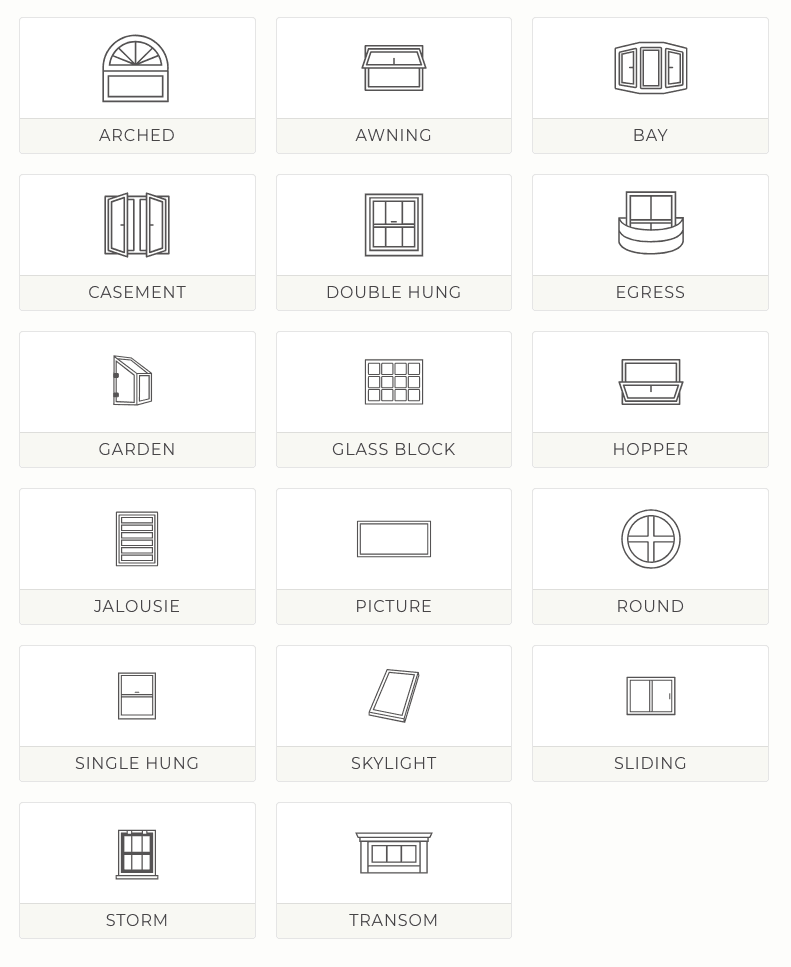
SITE-BUILT HOMES
Windows for homes come in many shapes, sizes, and types.
Cost is certainly a factor with anything, and it is no different for windows. Window frames are generally found in:
- Aluminum
- Vinyl
- Wood
Aluminum framed windows are usually the least expensive while wood framed windows usually cost the most. Then we find different types of glass:
- Single pane
- Double pane
- Low E Argon Gas Filled
Here, single pane is the least expensive while argon gas filed cost significantly more. Heat and cold rejection for thermal efficiency is the reason for opting for the more expensive windows.
What is common builder grade windows in many newer homes are aluminum or vinyl framed windows that are double pane. Many builders also offer low-e argon gas filled windows.
MOBILE (MANUFACTURED) HOMES
Most newer mobile homes have windows that are identical to site-built homes. The manufactured home builders generally have options for buyers in differing price ranges.
Older mobile homes generally were built with inexpensive single pane aluminum framed windows. There were limited sizes and most manufactures used the same sizes. Because of this, it is usually a less expensive proposition to easily replace older mobile home windows with more efficient newer ones.
We recently bought a mobile home for flipping. The home was built in 1987 and had single pane aluminum windows that were in good condition. The buyer who bought the home from us replaced these with standard sized double pane, vinyl framed argon gas filled windows for around $2800 for 9 windows installed.
Common Construction Methods – Roofing
SITE-BUILT HOMES
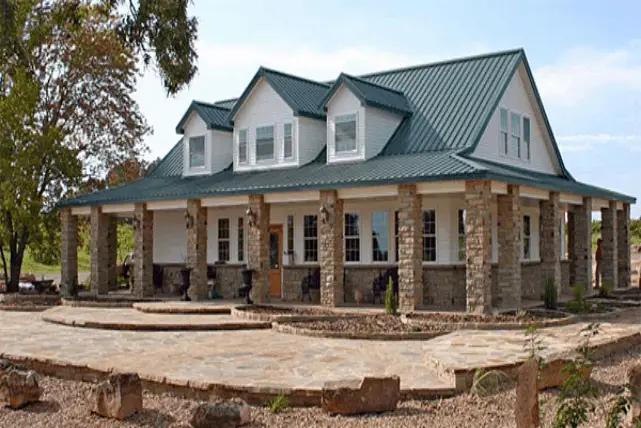
As with most things in construction there is a material and price for every budget. The most common types of roofing materials used in site-built homes are:
- Built-Up Roofing – This type of roofing is often used for flat roofs. It consists of built-up layers of asphalt, tar or adhesive and is often topped with an aggregate. This type of roof is prone to leaking unless it is well designed and executed with plenty of drainage. You can expect a lifespan for this type of roof at around 20 years.
- Asphalt Shingles – These tend to be the least expensive roofing option and are found on the majority of existing site-built homes. There are varying price ranges with this type of shingle from flat 3-panel tabs on the low end to built-up multi-layered architectural styles on the high side. You can expect to replace asphalt shingles after 20 to 30 years.
- Metal Roofing – This type of roofing material has become much more popular in the last 20 years. This type of roof can be expected to last about 60 years. The steel sheets are lightweight and can be installed over existing roofing. The installed price will be from about $5 to $12 per square foot. Which is more than asphalt shingle, but less than concrete or clay tile. One item of note is that a metal roof can be noisy during rainstorms and can also dent from hail.
- Clay and Concrete Tiles – Roofing structures may need to be reinforced for this type of roofing material. These tiles are extremely durable and can withstand all types of weather. They are most commonly found in the dryer climes of the southwest and western areas of the country. There is a felt underlayment that over time deteriorates and must be replaced after about 20 to 30 years. The tiles can be removed and then reinstalled after the felt underlayment is replaced.
- Stone-Coated Steel – These are lightweight steel tiles that are sprayed with coatings that mimic slate or clay tiles. These tiles are very durable and are an effective choice for wet and windy areas. Some stone-coated steel roofs are warranted for the lifetime of the home.
- Slate – These are natural stone tiles that can last 100 years or more. They won’t burn, are waterproof and resist mold and fungus. However, they are very expensive and may be easily broken when stepped on.
MOBILE (MANUFACTURED) HOMES
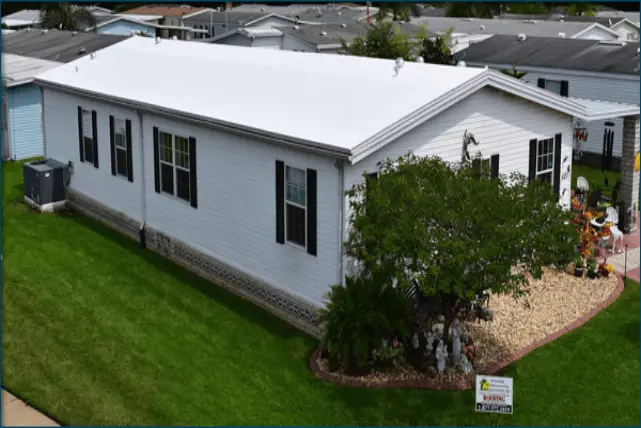
The most common types of roofing found on manufactured homes are:
- Asphalt Shingle – Just as above with site-built homes, the vast majority of mobile homes built since the 1980s have this type of roof.
- Rolled Steel – Most older mobile homes were built with rolled-steel roofing. It is not uncommon to experience leaks where the metal panels meet the outer walls, or where the metal panels are joined together. These roofs should be coated with a roof coating every few years to keep them water tight.
- Metal Roofing – This is the same type of material as found in site-built homes above. Metal roofing sheets are often used for re-roofing mobile homes for the same reason it is on traditional homes. It is lightweight, can be used over an existing roofing material and is very long lasting.
- Rubber Membrane – If you plan on living in your manufactured home for years to come and it is time to replace your roof, this might be a good choice. Although it is expensive, it works will on low-pitched roofs and lasts for decades. It may be difficult to find experienced contractors who are able to properly install the roofing material.
Common Construction Methods – Siding
SITE-BUILT HOMES
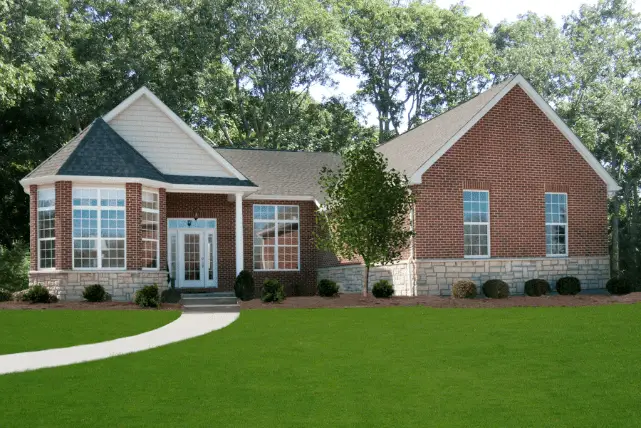
- Brick Siding – This is a common upscale look used in many neighborhoods; especially in the south. It is durable, low maintenance and comes in a variety of styles and colors that does not require repainting or refinishing. The principal drawback of brick siding is that it can be very expensive.
- Engineered Wood – This siding comes in a variety of style choices that can mimic everything from wood to brick and stucco. The principal advantage of engineered wood siding is that it is and more durable than many other types of siding. Also, it is easily installed.
- Fiber Cement Siding – This is often compared to vinyl or aluminum siding in that it is man-made and mimics the look of other materials such as wood. The major benefits is that it is cheaper and more durable that actual wood siding while also requiring far less maintenance. It is also fireproof, waterproof and insect proof. It is a very heavy material which can increase installation costs.
- Metal Siding – We will lump aluminum siding in with this category. This is a durable, low maintenance siding alternative. It is also very efficient when it comes to keeping a home cool as it reflects sunlight. However, it does not retain heat, thereby increasing heating costs.
- Stone Siding – This comes in both natural and man-made products. It gives the home an upscale appearance. Stone is a durable material resistant to weather and other things like insects. Natural stone siding is ver expensive and time consuming to install. A good alternative is man-made stone siding which is easier to work with, lighter and cheaper to install while giving the appearance of natural stone.
- Stucco – This is heavily used throughout many parts of the country. Especially the west and southwest areas. Stucco is made from cement, lime, sand, water and often epoxy. Stucco is typically solid, durable and very low maintenance. Paint on stucco can last many times longer than paint on wood. It is also less expensive than many other types of siding such as natural wood, brick or stone.
- Vinyl Siding – This is a durable siding material made of plastic and really started to take hold in the 1950s. It is resistant to dings and dents like aluminum or metal siding is subject to. Vinyl siding can mimic several different textures, such as wood. It is lightweight and simple to install. Over time, vinyl siding will fade and become chalky from oxidation from the sun. It can be painted, but often it is difficult to get paint to properly adhere to the vinyl; causing peeling and chipping.
- Wood Siding – Wood siding is versatile and durable. It can be painted or stained to any color desired. The major disadvantage is that wood siding needs to be treated or painted very few years. It is also susceptible to insects.
When considering what type of siding is right for your home, you should take into consideration the initial cost, the needed maintenance and upkeep, the durability, the thermal efficiency, and the aesthetics.
MOBILE (MANUFACTURED) HOMES
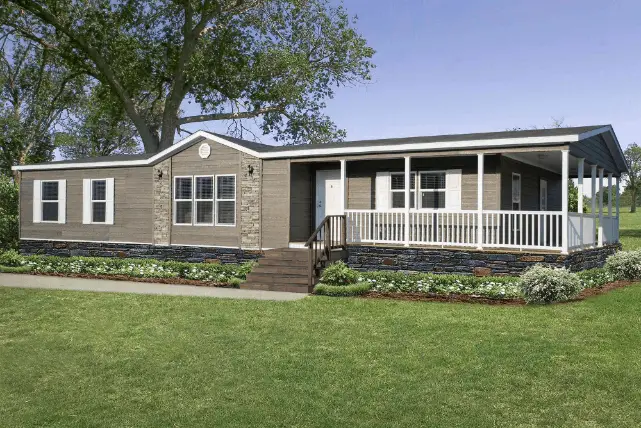
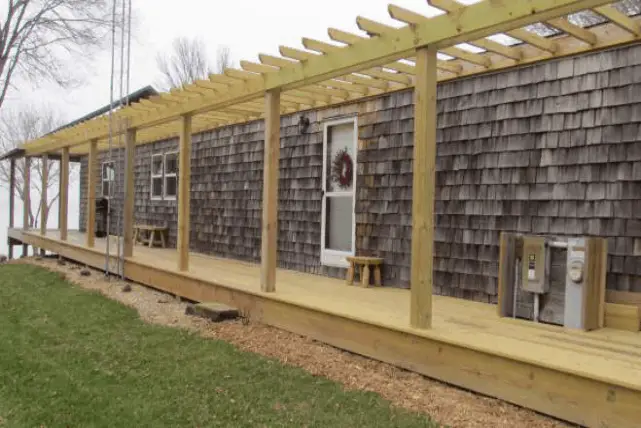
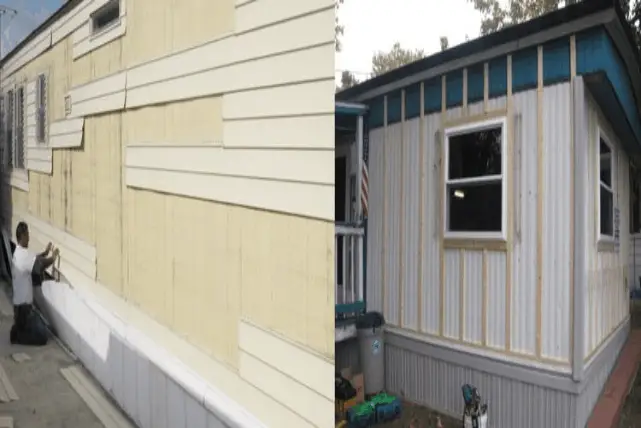
Manufactured homes have many of the same siding options as site-built homes. They include:
- Vinyl Siding – This is the most popular siding for most mobile homes. It is lightweight, inexpensive and looks good on any manufactured home. It isn’t without drawbacks. Much of it is made very thin and some from cheap recycled plastics. It often warps and fades very quickly. It isn’t watertight and water has been known to seep in and rot the wood and insulation underneath.
- Wood Siding – This can be an excellent choice for manufactured homes as long as you keep in mind the issues with wood in general. Namely, rot, water damage, upkeep, and insects. There are so many choices when it comes to wood siding. Some of the choices include T1-11 plywood sheet siding, cedar planks, cedar shingles, and log planks. Wood siding can be heavy, expensive and hard to install on older mobile homes. The weight is especially an issue if the mobile home is every to be moved.
- Faux Stone Siding – This is an excellent choice for beauty and resistance to rot, water damage, insects and fire. It is expensive! Fuax stone siding can give a manufactured home the appearance of a permanent structure. Because of the cost, faux stone siding is often used as accents, such as corners, areas of the entry and skirting.
- Fiber Cement Siding – This comes in many types of siding styles that can mimic just about any other type of siding. It is available in varying styles of boards and thickness. It is also rot and insect resistant along with low maintenance. It is made of silica, cement, wood fiber and water. Because it is approximately 90% silica (sand) it is very fire resistant and withstands heat very well. The greatest drawback is weight. Fiber cement siding weighs about 300lbs for 100 square feet. This can be a real issue if you ever need to move the home. This is higher in cost when compared to vinyl siding, but still less than wood siding or faux stone siding.
- Aluminum Siding – This siding has been used for decades. It is light weight, inexpensive, easy to install, and resistant to most everything from insects to fire. Problems? Certainly, it dents very easily. Often, trying to find like panels of aluminum siding to repair damage panels on a home can be difficult. It the home already has siding and you’re looking for a way to update the look, try painting. Also, it is possible to use other types of siding listed above as accents, such as skirting, or part of the entry area or front.
Related Questions
BENEFITS OF MANUFACTURED HOMES
- Less Expensive – Generally manufactured homes are less expensive, whether you’re buying new or a resale. When cost is a big issue, it is quite easy to find good manufactured homes that have been neglected with maintenance. Many of these homes cosmetically look a disaster, but structurally they are sound. In fact, we’ve often had manufactured homes like these given to us by owners and by mobile home parks.
- Cheaper to maintain – This includes renovation! Because the shapes and designs of most mobile homes are far simpler than site-built homes, they generally cost much less to repair and maintain than a site-built home. For example, the plumbing and HVAC system are easily accessible as they run underneath the home.
DRAWBACKS OF MANUFACTURED HOMES
- Location – There are fewer lots available for manufactured homes
- Rural vs. city – Many rural areas are zoned so that manufactured housing can be placed in most areas. Cities are usually much different. Many cities have some subdivisions where manufactured housing is allowed, but they are often limited in availability. Choosing manufactured housing inside of a city often means being located inside of a mobile home park.
- Quality of neighborhoods – Many areas that are zoned for manufactured housing do not have homeowner’s associations. Many are also located in county islands, not within the city. This means that the rules and regulations controlling what can and cannot be done with the properties is more lax than most site-built neighborhoods with HOA’s and inside of city limits. Many manufactured home neighborhoods are not as conveniently located and often are not as well kept.
- Architectural Style – Manufactured homes have come a long way in recent decades, but generally still lag behind site-built homes.
- Exterior – Most manufactured homes are still built with a simple rectangular plan. This is less expensive to build and is easier to transport because there are fewer sections involved. The simpler the design, the less expensive it is to build, transport and setup. There are many options usually available from the manufactured home builders, but, most homes are built to a lower price point when compared to site built homes. Manufactured home styles tend to be simple and less appealing.
- Interior – For the same reasons as stated for the exterior, the interior of mobile homes are usually built to a lower price point than most site-built homes; aesthetics usually take a back seat to cost.
- Quality of finishes – Manufactured home builders almost always offer fine finishes both inside and out as options. Yet, most manufactured homebuyers are looking for a less costly way to get into a home. The result is that many manufactured homes, when new, were built to the basic house as offered by the builder. The majority of manufactured homes were built as basic models with few higher-grade options.
- Financing – This is harder to come by for lots of manufactured housing. Financing for a manufactured home often comes down to whether or not the manufactured home can be considered real estate. Follow this link for additional information on manufactured home financing.
